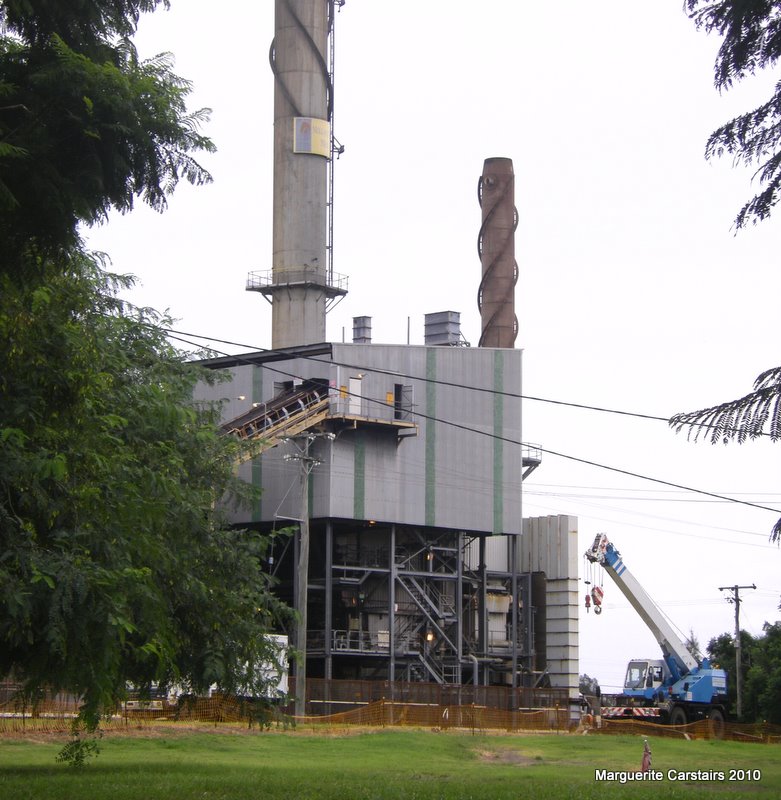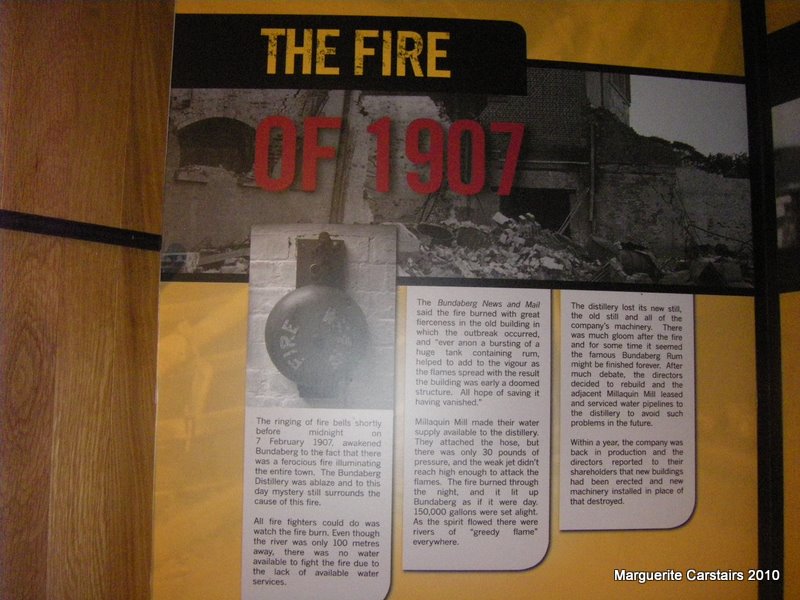The Millaquin Sugar Mill is situated about four kilometres from the center of Bundaberg and was established in the early 1880's on the banks of the Burnett River.
http://www.slq.qld.gov.au/whats-on/exhibit/online/timewalks/other/bundy/mill
In 1927 it was destroyed by a fire, rebuilt and is now the home of the Bundaberg Rum Factory.
Icons of the sugar industry are getting a facelift as Bundaberg Sugar spends millions upgrading their Millaquin sugar mill.
http://www.abc.net.au/local/audio/2010/04/08/2866985.htmIt will cost the miller $40 million over four years to upgrade the Bundaberg mill. Eight million has already been spent and another $14 million will this year go towards replacing things like the mill's historic steam engines.Further down the track the very visible 62 metre high chimney stack will also be swapped for a smaller one.
Millaquin Mill is located at its original site on the bank of the Burnett River in Bundaberg. This is an integrated
site at which cane is crushed, raw and refined sugar is produced. Nearby, alcohol is distilled and rum is bottled. Millaquin Mill provides the Molasses needed to make Rum. The other products are yeast and water.
The PDF will tell you more about Bundaberg Sugar.
http://www.bundysugar.com.au/files/Bundaberg%20Sugar_corp%20brochure_June%2008.pdf
Bundaberg Rum is a dark rum produced in Bundaberg, Australia, often referred to as "Bundy".
The Bundaberg Distilling Company owns its own cola producing facility, which supplies the cola for its ready-to-drink Bundaberg Rum and Cola products.
Bundaberg Rum originated because the local sugar mills had a problem with what to do with the waste molasses after the sugar was extracted (it was heavy, difficult to transport and the costs of converting it to stock feed were rarely worth the effort). Sugar men first began to think of the profits that could be made from distilling.
Bundaberg rum was first produced 1888, production ceased from 1907 to 1914 and from 1936 to 1939 after fires, the second of which caused rum from the factory to spill into the nearby Burnett River.
In 1961, the company introduced the polar bear as its unusual choice of mascot, to imply that the rum could ward off the coldest chill.[2]
In 2000, the Bundaberg Rum company and distillery were sold to British company Diageo.[3]
http://en.wikipedia.org/wiki/Bundaberg_Rum
The tour costs $25, and if you do not have closed shoes, another $3 to hire soft rock shoes.
The Virtual Tour is $9, and this offers a very comprehensive story of the Rum Process and distillery, and actually would be sufficient, as the full tour does not take you into where the rum is made, simply into the Molasses Vat, and to the doorway of where the huge barrels are stored, and gives you 2 free drinks of a Rum of your choice in the Bar Distillery. You can probably buy a drink here without the tour.
One also is not permitted cameras, and anything with batteries, but as we did not go anywhere with fumes, I cannot see the point of all this security. Everything is available on the new Virtual Tour which also includes a comprehensive video based on a character who is supposed to be yeast, and he tells the story of how yeast and sugar get together to create Rum. It was entertaining and stretched to maximum time, which means it was slow, repetitive and levelled at someone slow, but it was a show.



No comments:
Post a Comment